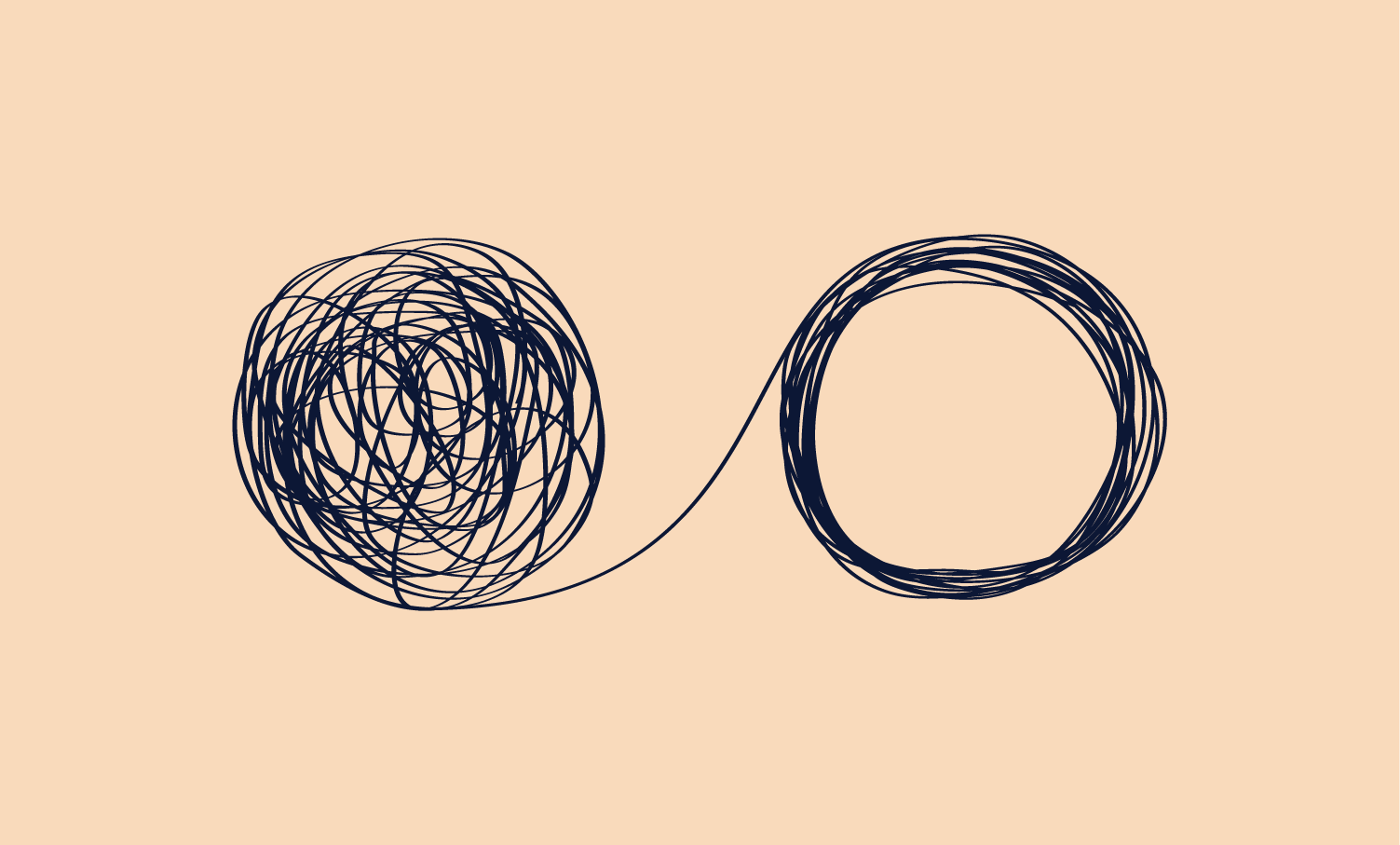
Dealing with anxiety and tending effectively to our emotional mess is determined by our ability to hold, experience and make space for it. The only way we can allow for movement in the way we feel is by becoming aware of our inner experience, embracing the mess and learning to befriend what is going on inside ourselves. It is knowing that there are no bad emotions. It is by allowing ourselves to feel (both heavy and light), without judgement, that we grow.
Feeling shitty is not a sign you’re doing life wrong
Difficult emotions are a part of being a fully feeling, messy and complex human being. It is in those spaces of uncertainty and discomfort that we really get to know our growing edges. There, holding the tension between the old and the new, at once vulnerable and resilient. If we don’t allow ourselves the opportunity to grow, to take the risk of it, we can never really know our own potential. When we invalidate or judge our own emotions, we strip them of their ability to teach us. Have you ever said any of these things to yourself?
‘I shouldn’t feel this way.’
‘Why can’t I just stop it?’
‘Get your shit together!’
‘People have it worse off.’
‘It’s not that bad.’
‘I just need to get over it.’
Sound familiar? These are all ways of invalidating how we feel. Everyone feels emotions. The problem is when we judge our emotions or refuse to feel them. When we suppress emotions, they don’t go away; they only get stronger. Uncomfortable emotions, like sadness, hurt, anxiety, grief and anger, come to us as big, bright neon lights from the body and brain. They are signs that something is out of alignment in or around us – they don’t happen because of some ‘weakness’ within us. What creates true emotional endurance and buoyancy is what we do and think when difficult feelings come to us.
What am I feeling?
Feelings are confusing. They don’t show up with labels identifying what they are, with instruction manuals on how to best tend to them. They often arrive surrounded by other feelings, dressed up as something they are not, confusing us and making it harder for us to identify what we might be feeling – and subsequently what we might need to support ourselves. We might rush to identify what we are feeling, justifying the emotion to ourselves as appropriate to an event or thought and then leaving it there without pursuing it further. Without drilling a little deeper into what we are actually feeling, we can often rush ourselves into feeling better or pretending to feel better.
For example, you see a social media post or receive a message from a friend to say they have a great new job. This might prompt you to feel jealous, envious, cross or frustrated. You momentarily feel it and then brush over it, telling yourself you are a horrid person for feeling that way, pressuring yourself to instead reach out in celebration, offering congratulations perhaps, which is the expected thing to do. In doing so, you abandon yourself, leave yourself behind. You might find you feel brittle, upset or just a bit ‘off’ when you next see the friend. You might find ways of disliking the friend to put distance between you and them, finding it too hard to confront. As a consequence, you don’t fully connect to the feeling that perhaps you are not confident enough – or feel you are not good enough – to look for a new job or realise your own potential.
If you can allow difficult feelings to form fully-fledged, you can gather important information about yourself. Maybe you are dissatisfied, unfulfilled or feeling left behind – in doing so, you get a bit closer to what’s really going on for you and what you might need. If you don’t encourage yourself into more inquiry, you can sometimes become stuck where you are. You can’t grow if you’re stuck.
We discover much more about ourselves if we uncover our truest, often more vulnerable, emotions. If not, we might jump to the wrong conclusions about ourselves, based on incorrect information. For example, if you are angry because you have been lied to, yes, perhaps you are immediately angry, but you might also feel wounded, betrayed and vulnerable. Without delving into the deeper layer of intel, you might rush to treat your anger with a run, a vent or an argument, ignoring the other emotions that might need caring for in completely different ways.
Feelings in disguise
Feelings are able to disguise themselves very well. Sometimes they show up as familiar emotions or sometimes something totally different:
Anger: dressed up as sadness, resentment or despair.
Jealousy: dressed up as over-compliance or hate.
Shame: dressed up as resentment or fear.
Dependence: dressed up as independence.
Hope: dressed up as anxiety.
Shyness: dressed up as humour or confidence.
Fear: dressed up as courage.
Doubt: dressed up as absolute certainty.
These acts of disguise can make it particularly difficult for us to understand how we might support our feelings. How can we take care of something if we don’t know what it is?! When you identify a feeling, take a moment to think about what your feelings might be, hidden away beneath the surface.
Dealing with Anxiety: The difference between sadness and depression
As therapists, we’ve met many people struggling with depression who thought they were just ‘sad’. We have also met many people who were extremely sad and worried they might be depressed. Because we associate depression with its primary symptom of pervasive sadness, many of us struggle to tell the difference.
On the surface, sadness and depression are very similar. Both can make people feel alienated from their normal lives, and withdrawn from relationships and the world. But there is one categorical difference between depression and sadness: the sad person knows what they are sad about; the depressed person doesn’t.
Sadness is a normal human emotion. We’ve all experienced it and we all will again. Sadness is usually triggered by a difficult, hurtful, challenging or disappointing event, experience or situation. Sad people can, without difficulty, tell us what is troubling them: ‘I’ve lost my job’, ‘I’ve been hurt by someone I love’, ‘I’ve been let down’, ‘Someone I love has died’. We tend to feel sad about something. This also means that when that something changes, when our emotional hurt fades, when we’ve adjusted or processed a loss or disappointment, our sadness gets lighter.
A depressed person often feels sad about everything. They can’t conclusively put a finger on what’s wrong. Depression affects our thinking, emotions, perceptions and behaviours in pervasive and chronic ways. Depression does not necessarily require a difficult event or situation, a loss or a change of circumstance as a trigger. In fact, it often occurs in the absence of any such triggers. People’s lives on paper might be totally fine – they would even say this is true – and yet they still feel horrible.
Depression is sadness that has forgotten ‘why’. Forgotten because remembering might be too overwhelming and unmanageable. When it comes to the signs and symptoms that sadness has crossed over into depression, there are three areas of our well-being that are impacted:
1. Psychological
The psychological symptoms of depression include: continuous low mood or sadness; feeling hopeless and helpless; having low self-esteem; feeling tearful; feeling guilt-ridden; feeling irritable and intolerant of others; having no motivation or interest in things; finding it difficult to make decisions; not getting any enjoyment out of life; feeling anxious or worried; having suicidal thoughts or thoughts of harming yourself.
2. Physical
The physical symptoms of depression include: moving or speaking more slowly than usual; changes in appetite or weight; constipation; unexplained aches and pains; lack of energy; low sex drive (loss of libido); changes to menstrual cycle; disturbed sleep (for example, finding it difficult to fall asleep at night or waking up very early in the morning).
3. Social
The social symptoms of depression include: avoiding contact with friends; taking part in fewer social activities; neglecting your hobbies and interests; having difficulties in your home, work or family life.
Each of these symptoms often comes on gradually, so it can be difficult to know something is off- kilter. Almost half of us will suffer from depression at some point in our lives and many of us live and cope with depression without reaching out for support.
What about anxiety?
We can place anxiety on a long scale: at the low end is uneasiness and at the high end is paralysing terror. In between we find fear, social anxiety, agitation, dread and panic.
It can be said that anxiety is our fundamental state of being. As descendants of the savannah, we still carry the horrors of being trampled on and hunted by other species. Today, we live in incredibly busy environments, constantly bombarded with information that our brains are always left chasing to process. We rely on much of our comfort from other people whose needs and wishes don’t always align with our own. We make big life decisions without really having the information we need to make them: a new job, a new flat in a new city, a new partner – we’re often going off gut feeling, steering blind.
Signs you might help dealing with anxiety
Are you experiencing any of these? Sometimes, your feelings can be quite subtle or seem quite everyday to you, but they might be signs that you are anxious.
Are you:
- Carrying physical tension?
- Skin-picking, nail-biting or foot-tapping?
- Increasing your alcohol intake?
- Procrastinating (putting things off)?
- Pre-crastinating (rushing through things to get them done)?
- Seeking distractions?
- Constantly planning ahead?
- Avoiding spontaneity?
- Seeking perfection?
- Finding it difficult to delegate to others/ask for help?
Of course, many of the things that cause us anxiety are part of being human and of living a full life. But there are times when anxiety can get in the way, impacting on the quality of your life; generalised anxiety disorder (GAD) can affect you both physically and mentally.
How do you know when everyday anxiety has crossed over into GAD? There are, again, three areas to consider:
1. Psychological
Psychological symptoms of GAD can cause a change in your behaviour and the way you think and feel about things. These include: restlessness; a sense of dread; feeling constantly ‘on edge’; difficulty concentrating; irritability.
2. Physical
Physical symptoms of GAD include dizziness; tiredness; a noticeably strong, fast or irregular heartbeat (palpitations); muscle aches and tension; trembling or shaking; dry mouth; excessive sweating; shortness of breath; stomach ache; feeling sick; headaches; pins and needles; difficulty fall ing or staying asleep (insomnia).
3. Social
Your symptoms may cause you to withdraw from social contact, including seeing your family and friends, to avoid feelings of worry and dread. You may also find going to work difficult and stressful, and may take time off sick. These actions can make you worry even more about yourself and impact your self-esteem.
If you think this is you, that you are experiencing GAD or depression, then the first step is acceptance. There is no need – on top of everything else – to be anxious that you are anxious. There is no need to be guilty about feeling depressed. When it comes to anxiety or depression, we should spare ourselves the loneliness involved in ‘just getting on with it’. We are far from the only ones who feel this way. Reach out to others, seek support.



